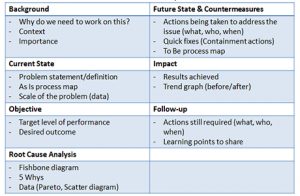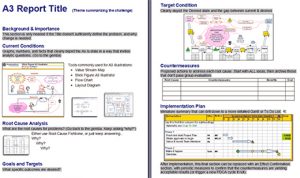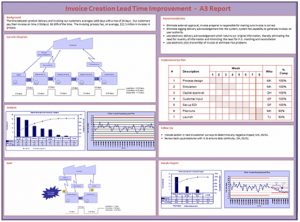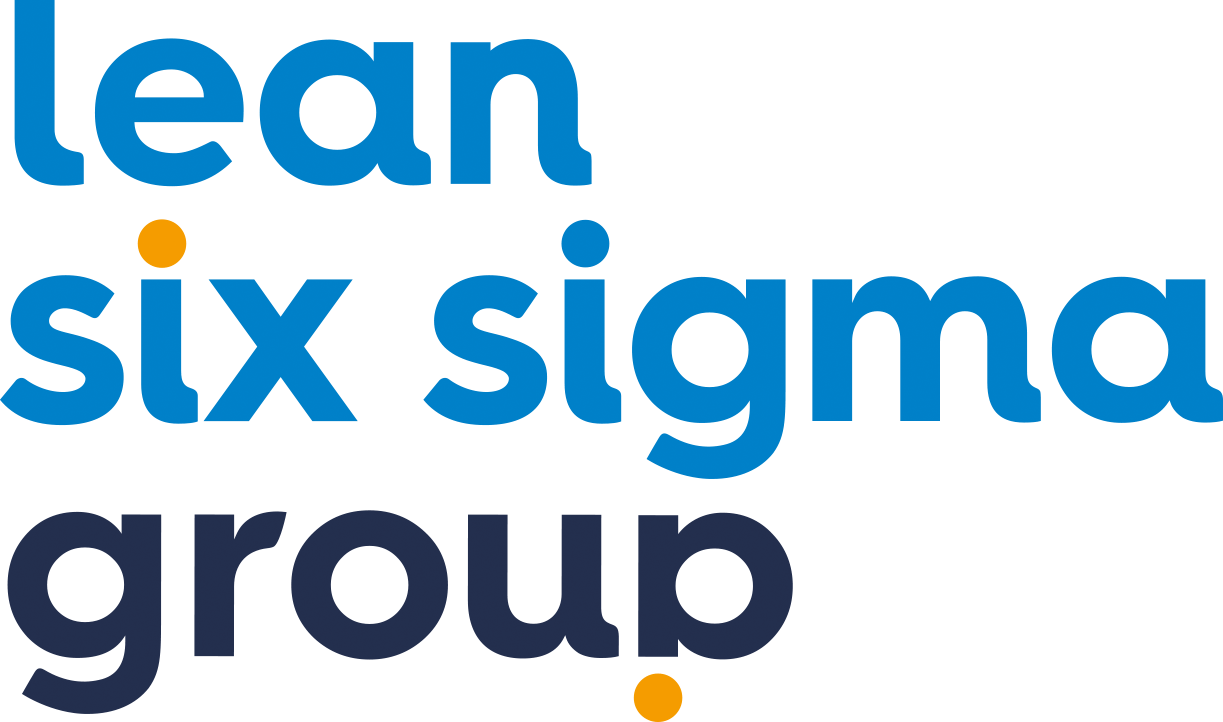A structured and systematic approach is necessary in order to solve process problems in organisations with Lean Six Sigma. Such an approach is possible with the use of the DMAIC cycle: Define, Measure, Analyse, Improve and Control.
There are tools for every phase that can be used to ensure the success of a Lean Six Sigma project. One of these tools is the A3 report, which is used during the Improve phase.
The A3 report is used to identify and comprehensibly convey the most important project information related to improvement of the process. This makes it easier to take decisions that influence the rest of the process.
As its name suggests, the intention is for the report to fit on a single page. This Lean tool is most suited to the completion of relatively short Kaizen improvement tasks. As a result, A3 reports would be less suited to more complicated projects undertaken in a DMAIC environment. Nonetheless, a good outlook on processes is important in order to make the right decisions, regardless of the project.
The structure of an A3 report
An A3 report often has the same set divisions, but it can also contain a number of additional points. Which divisions are useful depends on the state. The below example demonstrates what an A3 report may look like.

Background
Here, a short description of the problem and its cause is provided with emphasis on its importance to the organisation and the measures that are in place.
Current state
The current state involves a description or visual representation of the problem that must be tackled.
Goals
A representation of the ideal state without the problem having occurred. You could consider this the desired state.
Analysis
An analysis must be performed in order to determine the cause of the problem. The findings from this analysis are entered here.
Recommendations
Here, the solution(s) and measures necessary to eliminate the causes identified in the analysis are described.
Implementation plan
Once the necessary measures have been made clear, a plan of approach is required. Here, the tasks, data, duration, responsibilities and status related to the process are described. This step is usually added if the A3 report is to be used as a progress tracking report.
Follow up
These are the tasks that must be carried out after implementation to ensure the continued good future performance of the process.
Results
This is an optional step to be used when the A3 report serves as a progress tracking report. It describes the progress made by the implementation plan and the measures taken.
The layout and presentation of A3 reports can vary greatly. We have provided a number of examples to give you an idea.





